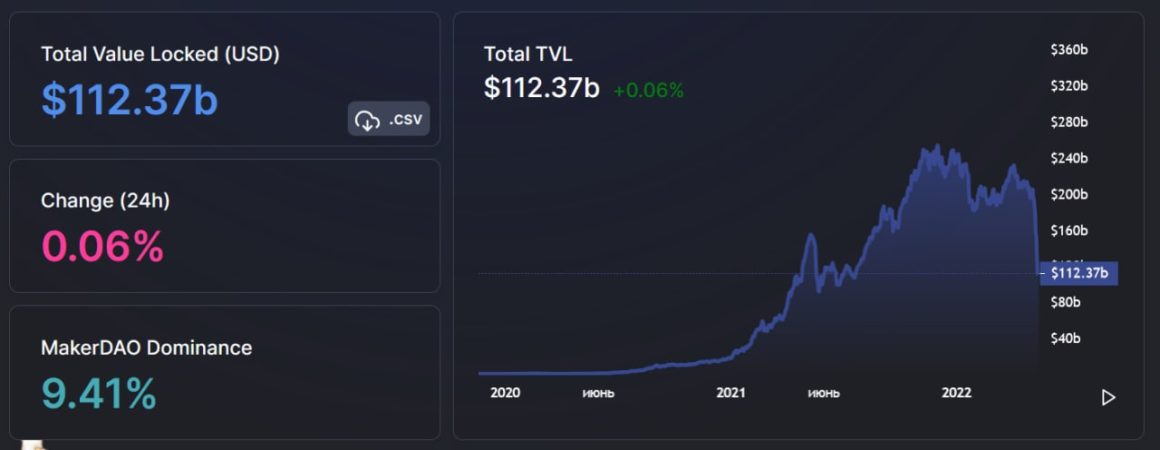The collapse of the UST stablecoin and the major crisis of confidence in stablecoins led investors to withdraw funds from DeFi protocols en masse. The calamity has exposed many of the weaknesses in the decentralized finance industry but also created an excellent opportunity for it to work out the flaws and upgrade on the way to new heights.
In the blockchain industry, things escalate quickly. Shortly after the collapse of Terra, May 13 already saw an active withdrawal of investors’ funds from DeFi protocols. And even the preceding slight recovery in the bitcoin price did not help: the crypto market was firmly in a bearish mode following the UST stablecoin catastrophically losing its peg to the US dollar over a few days.
It undermined investor confidence in the cryptocurrency markets and especially in stablecoins, often called the “fuel” for decentralized finance. It is therefore not surprising that amid the crisis, many investors (even those who had nothing to do with the Terra [LUNA] ecosystem) began to take out funds from DeFi protocols. Traders transferred their tokens from protocols to stablecoins to then redeem them and withdraw fiat money.
The total value locked (TVL) in DeFi protocols fell to $112.37 billion (at points dropping as low as$109.5 billion).

MakerDAO has become the new DeFi market leader with a TVL of $10.57 billion. Lido ($8.43 billion) and Curve ($8.81 billion) hold the second and third positions in the rating, respectively. The fourth place belongs to AAVE ($8.6 billion), and the fifth is occupied by Uniswap ($5.68 billion).
Looking at specific blockchains used in DeFi, we can see that TVL in Ethereum applications has dropped to $71.31 billion – down 38.56% over the past 30 days. BSC is not doing much better, with a 33.20% decrease over the same time – a fall to $8.61 billion TVL.
The past month’s trading volume on decentralized exchanges (DEXs) amounted to $91.3 billion. Uniswap continues to dominate the non-custodial exchange market, accounting for 61.1% of total turnover. The second DEX by trading volume is Curve (21.4%), followed by Balancer (6.5%) and SushiSwap (5.1%).
The current crisis around decentralized finance is just one component of an overall crypto industry decline. The Wall Street Journal, a leading financial publication, estimates that the cryptocurrency market has shrunk by more than $1 trillion in the past six months. Among the main reasons, the WSJ experts list investors massively pulling back from risky assets while inflation is growing and the American regulatory requirements are changing.
Stablecoins collapsing by 29% in half a year surprised even experienced market participants. Now, both private and institutional investors are withdrawing from crypto assets. The latter, represented in large part by hedge funds, have only recently dominated the cryptocurrency market.
At its peak in November 2021, Bitcoin crossed the $68.500 mark, and Ethereum exceeded $4800 around the same time. As I write this article, both BTC and ETH have lost more than half their values, now trading at $29,957 and $2,068.
You know what it all reminds me of – the fall in cryptocurrency prices, the stablecoin crisis, and the rapid contraction of the DeFi sector? Some of you are probably old enough to remember that period in 2000, the end of the dot-com boom. The market for Internet companies then also got “overheated” by an abundant inflow of investment, when suddenly came an understanding that reality failed to keep up with expectations. The result was plunging tech and Internet company stocks, as indicated by the NASDAQ index.
Another similarity to the crisis of 22 years ago is that the dot-com bubble burst after several Internet-based companies speculated on an unreasonably high level of investor confidence in the sector. They ended up crashing and burning, pulling others to the bottom with them. On the other hand, companies with a sound technological base survived the crisis and continued growing to become some of the most well-known names on the market today – Google, Amazon, eBay, Priceline, and many others.
The events in the crypto world we are witnessing are very similar to the end of the internet company bubble. So BTC, ETH, Solana, Ripple, and other proven projects will likely prevail and develop further. The current cooling of the market results from an excess inpouring of fiat money, done to a large extent by non-professional investors.
There is no doubt in my mind that in about a year, the DeFi market will recover and probably even surpass previous highs. But for this to happen, several problems will have to be addressed. First, restoring confidence in stablecoins. Second, fighting off the regulators. And, on a larger scale – returning to real decentralization, which, unfortunately, too many DeFi projects have lost (or never had in the first place).
To that point, Samson Mow, the former Chief Strategy Officer for the blockchain company Blockstream, recently said that most DeFi protocols could not compete with Bitcoin as an efficient monetary network precisely due to insufficient decentralization. According to him, DeFi project teams usually have the right to adjust the protocol at any time.
“Money at a fundamental level must be immutable. If you can make changes at will, then it is no better than fiat currency managed by a central bank,” Mow explained his position.
Indeed, the decentralized nature of bitcoin (like most “classic” cryptocurrencies) prevents easy changes to the protocol. That makes them the best candidates for a key role in the new global monetary system, where, on the one hand, we will see a stable basis in the form of “digital gold” (BTC, and possibly not only it), and on the other hand, a variety of DApps with second-level solutions. Such a disposition makes the new financial world a place for everyone.



